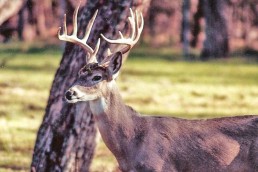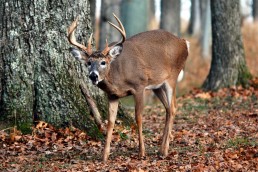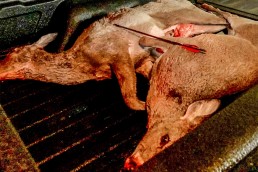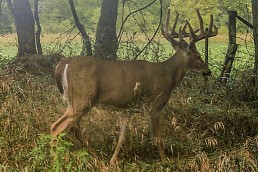Considerations for Judging Deer on the Hoof
SHARE THIS POST
Many of us misjudge that buck coming out of the early-morning mists. The difference in the perceived size of an animal on the hoof, and the actual size of his antlers, sometimes becomes what is ‘ground shrinkage.’ Each year, some ‘monster’ bucks fall in Kentucky and other Midwestern states.
But sometimes what looked like a ‘monster’ turns out to be somewhat less.
How can you judge the actual size of the animal’s antlers before deciding whether or not to shoot, or wait for something larger? Experience is probably the best bet.
Experience comes from looking at lots of deer. Veteran hunters are constantly looking at deer antlers. They view them in a friend’s home; they view them in the wild, as well as in captivity. They view them online at various websites. They attend sports shows where displays of major trophy animals provide the chance to see the ‘big uns.’ They study the record books and learn the scoring systems.
No single factor makes a great buck. It is a combination of attributes. Here are some of the main areas in which deer score well. A famous outdoor writer is attributed to have said, “When you see a great deer, you know it.”
You know it because he is awesome, just in his appearance. Ear spread is the best way to estimate the inside spread of a deer’s antlers. The distance tip to tip of expended ears is about 17 inches. This is for a mature buck looking straight at you.
Looking from the side, it is a bit more difficult to estimate size. The closer the main beams come to a vertical line through the end of the nose, the more the chance he is a big one. He needs to have great length to the main beams to reach that far forward.
Are you enjoying this post?
You can be among the first to get the latest info on where to go, what to use and how to use it!
One quick way to estimate the number of tines on a buck’s rack is to count the number of fighting tines. These are the tines other than the end of the main beam and the eye guards. Thus, a buck with two fighting tines is an 8-point buck. That is, he has a main beam point, an eye guard and two tines in between. This is on one side, and it is quick judgment to see if the other side is the same. End result, an 8-pointer.
If the deer has exceptionally long tines, or heavy mass to his rack, he is keeper.
When a deer antler is scored for the record books, they add the length of each main beam, the inside spread, length of all normal points, and the circumference of various locations on the points. Thus, you can see the overall mass of the antlers is just as important as the length of the tines.
The more someone looks at deer in the wild, the better he or she is at field judging a good trophy. Now is the time to begin scouting deer for the upcoming season if it has not already begun in your area.
The deer are still relatively calm and allow you to look them over carefully. Later, after the velvet is gone from their antlers and the woods are full of hunters, they are not as likely to stand still while you check them out. Public land is a good place to check them out. Places like forest preserves and parks are good for this type of scouting.
Observance of deer in the field in early fall can pay big dividends later this fall. Avoid the disappointment of ‘ground shrinkage’ by doing your homework.
MWO
SHARE THIS POST
Did you enjoy this post?
You can be among the first to get the latest info on where to go, what to use and how to use it!
Don Gasaway
Don Gasaway is a veteran freelance outdoor writer from Marion, Ill. He may also be found at: https://www.facebook.com/DonGasawayWriter and facebook.com/Wandering Angler. Comments are welcome



